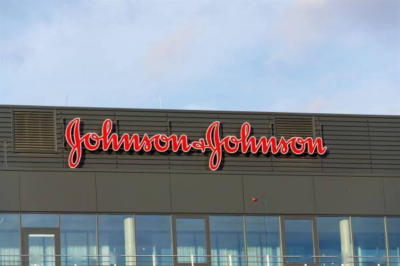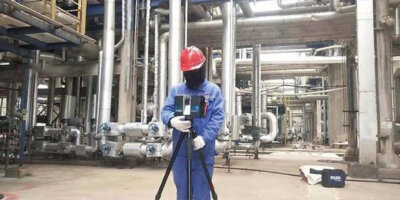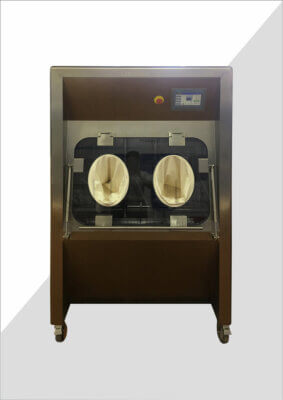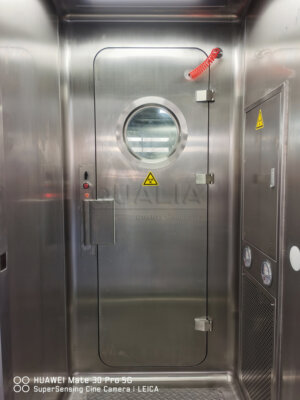The pharmaceutical industry faces a significant challenge in managing its effluents, which often contain complex and potentially harmful compounds. As environmental regulations tighten and public awareness grows, the need for innovative solutions in pharmaceutical effluent treatment has never been more pressing. Emerging technologies are paving the way for more efficient, cost-effective, and environmentally friendly treatment processes.
This article explores the cutting-edge advancements in pharmaceutical effluent treatment, from advanced oxidation processes to novel biological systems. We'll delve into how these technologies are transforming the landscape of wastewater management in the pharmaceutical sector, addressing both current challenges and future opportunities.
As we navigate through the various emerging technologies, we'll examine their principles, applications, and potential impacts on the industry. From membrane-based solutions to bioelectrochemical systems, each innovation offers unique advantages in tackling the persistent issue of pharmaceutical contaminants in wastewater.
"Emerging technologies in pharmaceutical effluent treatment are not just improving water quality; they're revolutionizing the entire approach to environmental stewardship in the pharmaceutical industry."
The following table provides an overview of key emerging technologies in pharmaceutical effluent treatment:
| Technology | Primary Benefit | Target Contaminants | Implementation Complexity |
|---|---|---|---|
| Advanced Oxidation Processes | High removal efficiency | Persistent organic pollutants | Moderate to High |
| Membrane Bioreactors | Space-efficient, high-quality effluent | Broad spectrum of contaminants | Moderate |
| Bioelectrochemical Systems | Energy-efficient, low sludge production | High BOD wastewater | High |
| Nanofiltration | Selective removal of pharmaceuticals | Specific molecular weight range | Moderate |
| Supercritical Water Oxidation | Complete destruction of contaminants | Organic pollutants, pharmaceuticals | High |
How are Advanced Oxidation Processes transforming pharmaceutical wastewater treatment?
Advanced Oxidation Processes (AOPs) represent a significant leap forward in the treatment of pharmaceutical effluents. These processes utilize highly reactive species, such as hydroxyl radicals, to break down complex organic compounds into simpler, less harmful substances.
AOPs are particularly effective in treating recalcitrant pharmaceutical compounds that resist conventional biological treatment methods. They can degrade a wide range of pharmaceuticals, including antibiotics, hormones, and other biologically active substances.
The application of AOPs in pharmaceutical wastewater treatment has shown promising results in both pilot and full-scale implementations. For instance, the combination of UV light and hydrogen peroxide has demonstrated high removal efficiencies for various pharmaceutical compounds.
"Advanced Oxidation Processes have the potential to remove up to 99% of certain pharmaceutical contaminants from wastewater, significantly reducing the environmental impact of drug manufacturing."
| AOP Type | Oxidant Used | Energy Source | Removal Efficiency |
|---|---|---|---|
| UV/H2O2 | Hydrogen Peroxide | UV Light | 80-99% |
| Ozonation | Ozone | – | 70-95% |
| Photo-Fenton | Iron + H2O2 | UV Light | 85-99% |
What role do Membrane Bioreactors play in addressing pharmaceutical effluents?
Membrane Bioreactors (MBRs) are emerging as a powerful tool in the treatment of pharmaceutical wastewater. These systems combine conventional activated sludge treatment with membrane filtration, offering a compact and efficient solution for removing a broad spectrum of contaminants.
MBRs excel in producing high-quality effluent, capable of meeting stringent discharge standards. Their ability to retain biomass and provide a physical barrier to contaminants makes them particularly suitable for treating pharmaceutical wastewater containing complex organic compounds.
The integration of MBRs in pharmaceutical effluent treatment plants has shown significant improvements in both water quality and operational efficiency. These systems can handle high organic loads and produce consistently clean effluent, making them an attractive option for pharmaceutical manufacturers.
"Membrane Bioreactors have demonstrated the ability to remove over 95% of many pharmaceutical compounds, while also reducing the overall footprint of treatment facilities by up to 50%."
| Parameter | Conventional Activated Sludge | Membrane Bioreactor |
|---|---|---|
| BOD Removal | 85-95% | >98% |
| COD Removal | 80-90% | >95% |
| Pharmaceutical Removal | Variable (30-70%) | 80-99% |
| Space Requirement | High | Low |
How are Bioelectrochemical Systems revolutionizing high-strength pharmaceutical wastewater treatment?
Bioelectrochemical Systems (BES) represent a cutting-edge approach to treating high-strength pharmaceutical wastewater. These systems leverage the metabolic activities of microorganisms to generate electricity while simultaneously treating wastewater.
BES technology, particularly Microbial Fuel Cells (MFCs) and Microbial Electrolysis Cells (MECs), offers a unique combination of wastewater treatment and energy recovery. This dual benefit makes them an attractive option for pharmaceutical manufacturers looking to reduce their environmental footprint and energy costs.
The application of BES in pharmaceutical effluent treatment has shown promising results, especially in dealing with high Biological Oxygen Demand (BOD) wastewater. These systems can effectively break down complex organic compounds while producing valuable byproducts such as hydrogen or electricity.
"Bioelectrochemical Systems have demonstrated the ability to reduce COD levels in high-strength pharmaceutical wastewater by up to 90%, while simultaneously producing electricity or hydrogen gas."
| BES Type | Primary Function | Energy Output | COD Removal Efficiency |
|---|---|---|---|
| Microbial Fuel Cell | Electricity Generation | 0.1-1.0 W/m² | 70-90% |
| Microbial Electrolysis Cell | Hydrogen Production | 0.5-1.5 m³ H₂/m³ wastewater | 80-95% |
What advancements in nanofiltration are impacting pharmaceutical effluent treatment?
Nanofiltration (NF) is emerging as a highly effective technology for the selective removal of pharmaceutical compounds from wastewater. This membrane-based process offers a fine-tuned approach to targeting specific contaminants based on their molecular size and charge.
NF membranes are particularly adept at removing small organic molecules, including many pharmaceutical compounds, while allowing smaller ions to pass through. This selectivity makes NF an ideal choice for treating pharmaceutical effluents where the goal is to remove specific active pharmaceutical ingredients (APIs) without drastically altering the overall composition of the wastewater.
The implementation of NF in pharmaceutical wastewater treatment plants has shown significant improvements in the removal of a wide range of pharmaceutical compounds. Its ability to operate at lower pressures compared to reverse osmosis also makes it an energy-efficient option.
"Nanofiltration technology has demonstrated removal efficiencies of over 90% for many pharmaceutical compounds, while operating at lower pressures and energy requirements compared to reverse osmosis."
| Compound Type | Molecular Weight Range (Da) | Typical Removal Efficiency |
|---|---|---|
| Antibiotics | 300-1200 | 85-99% |
| Hormones | 200-400 | 90-99% |
| NSAIDs | 200-500 | 80-95% |
How is Supercritical Water Oxidation transforming the landscape of pharmaceutical waste treatment?
Supercritical Water Oxidation (SCWO) represents a groundbreaking approach to treating highly contaminated pharmaceutical wastewater. This technology utilizes the unique properties of water above its critical point (374°C and 22.1 MPa) to rapidly and completely oxidize organic compounds.
SCWO offers several advantages in treating pharmaceutical effluents, including the ability to handle high-strength wastewater and achieve complete destruction of organic contaminants. This process is particularly effective for treating recalcitrant compounds that resist conventional treatment methods.
The application of SCWO in pharmaceutical waste treatment has shown remarkable results in both pilot and full-scale implementations. Its ability to achieve near-complete destruction of organic contaminants makes it an attractive option for treating highly toxic or persistent pharmaceutical waste streams.
"Supercritical Water Oxidation has demonstrated the ability to achieve over 99.99% destruction of organic contaminants in pharmaceutical wastewater, including highly persistent compounds, within seconds."
| Parameter | Conventional Treatment | SCWO |
|---|---|---|
| Organic Removal | 80-95% | >99.99% |
| Treatment Time | Hours to Days | Seconds to Minutes |
| Sludge Production | High | Minimal to None |
| Energy Recovery | Limited | High Potential |
What role does the Effluent Decontamination System (EDS) play in addressing pharmaceutical effluents?
The Effluent Decontamination System (EDS) by QUALIA represents a significant advancement in the treatment of pharmaceutical effluents, particularly those from high-containment facilities. This system is designed to handle liquid waste from Biosafety Level (BSL) 2, 3, and 4 laboratories, addressing the unique challenges posed by potentially hazardous biological and pharmaceutical waste.
The EDS employs a multi-step approach to effluent treatment, combining physical, chemical, and thermal processes to ensure complete decontamination. This comprehensive treatment strategy makes it particularly effective for pharmaceutical facilities dealing with a wide range of contaminants, including active pharmaceutical ingredients, biological agents, and other potentially harmful compounds.
Implementation of the EDS in pharmaceutical research and manufacturing facilities has shown significant improvements in effluent quality and safety. Its ability to handle high-risk waste streams while meeting stringent regulatory requirements makes it an invaluable tool for the pharmaceutical industry.
"The Effluent Decontamination System has demonstrated the ability to achieve a 6-log reduction in biological contaminants and near-complete removal of pharmaceutical compounds, ensuring safe disposal of even the most challenging liquid waste streams."
| Treatment Stage | Process | Target Contaminants | Efficiency |
|---|---|---|---|
| Primary | Filtration | Solids, Large Particles | 95-99% |
| Secondary | Chemical Treatment | Biological Agents, APIs | >99.9999% |
| Tertiary | Thermal Treatment | Resistant Compounds | >99.99% |
How are algae-based systems contributing to pharmaceutical effluent treatment?
Algae-based systems are emerging as a promising eco-friendly solution for pharmaceutical effluent treatment. These systems leverage the natural ability of algae to absorb nutrients and contaminants from water, offering a sustainable approach to wastewater management.
Algal treatment systems can effectively remove a wide range of pharmaceutical compounds, including antibiotics and hormones. Additionally, they offer the benefit of biomass production, which can be used for energy generation or as a raw material for various industries.
The implementation of algae-based systems in pharmaceutical wastewater treatment has shown encouraging results, particularly in removing nutrients and certain classes of pharmaceutical compounds. These systems also contribute to carbon sequestration, aligning with broader sustainability goals.
"Algae-based treatment systems have demonstrated the ability to remove up to 80% of certain pharmaceutical compounds while simultaneously producing valuable biomass and contributing to carbon sequestration."
| Parameter | Conventional Treatment | Algae-Based System |
|---|---|---|
| Nutrient Removal | Moderate | High |
| Pharmaceutical Removal | Variable | 60-80% |
| Carbon Footprint | High | Negative (Carbon Sequestration) |
| Biomass Production | None | 10-30 g/m²/day |
In conclusion, the landscape of pharmaceutical effluent treatment is rapidly evolving, driven by innovative technologies that promise more efficient, sustainable, and effective solutions. From advanced oxidation processes to algae-based systems, these emerging technologies are not only improving the quality of treated wastewater but also contributing to the overall sustainability of the pharmaceutical industry.
As regulatory pressures increase and public awareness grows, the adoption of these cutting-edge technologies becomes increasingly crucial. The pharmaceutical sector stands at the forefront of a new era in wastewater management, where environmental stewardship and operational efficiency go hand in hand.
The future of pharmaceutical effluent treatment lies in the integration of these diverse technologies, tailored to the specific needs of each facility. By embracing these innovations, the industry can significantly reduce its environmental footprint, meet stringent regulatory standards, and contribute to the broader goal of water conservation and environmental protection.
As we move forward, continued research and development in this field will undoubtedly bring forth even more advanced solutions, further revolutionizing the way we approach pharmaceutical wastewater treatment. The journey towards cleaner, more sustainable pharmaceutical manufacturing is well underway, powered by these emerging technologies and the industry's commitment to environmental responsibility.
External Resources
Innovative technologies to remove pharmaceutical residues from wastewater – This article discusses the development of new technologies by the Leibniz Institute for Plasma Science and Technology to remove pharmaceutical residues from wastewater, using methods such as ultrasound, pulsed electric fields, and plasma technology.
13 New Technologies That Are Changing the Wastewater Treatment Landscape – This blog post highlights various innovative technologies in wastewater treatment, including those specifically designed to handle pharmaceutical effluents, such as BioElectrochemical Treatment Technology (BETT) and advanced membrane technologies.
Emerging Technologies for Wastewater Treatment and In-Plant Wet Weather Management – This document from the EPA outlines emerging technologies for wastewater treatment, including advanced oxidation processes, nanofiltration, and reverse osmosis, which are relevant for treating pharmaceutical contaminants.
Innovations in Industrial Wastewater Treatment: A New Era – This article explores innovative methods in industrial wastewater treatment, including membrane-based solutions, Moving Bed Biofilm Reactors (MBBR), and advanced oxidation processes, which can be applied to pharmaceutical effluent treatment.
Pharmaceutical wastewater as Emerging Contaminants (EC) – This scientific article reviews various studies on the removal of pharmaceutical contaminants from wastewater using different methods such as algae-mediated removal, activated carbon filtration, and solar photo-Fenton processes.
Advanced Oxidation Processes for the Removal of Pharmaceuticals from Wastewater – Although not a separate link, this section within the EPA document discusses advanced oxidation processes, which are crucial for breaking down pharmaceutical compounds in wastewater.
BioElectrochemical Systems for Pharmaceutical Wastewater Treatment – This section of the Aquacycl blog post focuses on BioElectrochemical Treatment Technology (BETT) and its application in treating high biological oxygen demand (BOD) wastewater, including pharmaceutical effluents.
Supercritical Water Oxidation (SCWO) for Pharmaceutical Contaminant Removal – This part of the Aquacycl blog post describes the use of Supercritical Water Oxidation (SCWO) by 374 Water Solutions to treat pharmaceutical contaminants and other pollutants in wastewater efficiently.
Related Contents:
- Revolutionizing Pharmaceutical Effluent Treatment: Emerging Technologies
- Effluent Decontamination: Ensuring Pharmaceutical Safety
- Navigating Regulatory Waters: Effluent Treatment in Biopharma
- Navigating the Complexities of High-Potency API Effluent Management
- The Environmental Impact of Pharmaceutical Effluents: A Comprehensive Assessment
- Effluent Decontamination Systems: Safeguarding Malaysia’s Environment
- Water Decontamination: Essential Methods for Clean, Safe Water
- Effluent Decontamination: Safeguarding Our Environment
- Continuous Effluent Decontamination: Protecting Our Environment






























